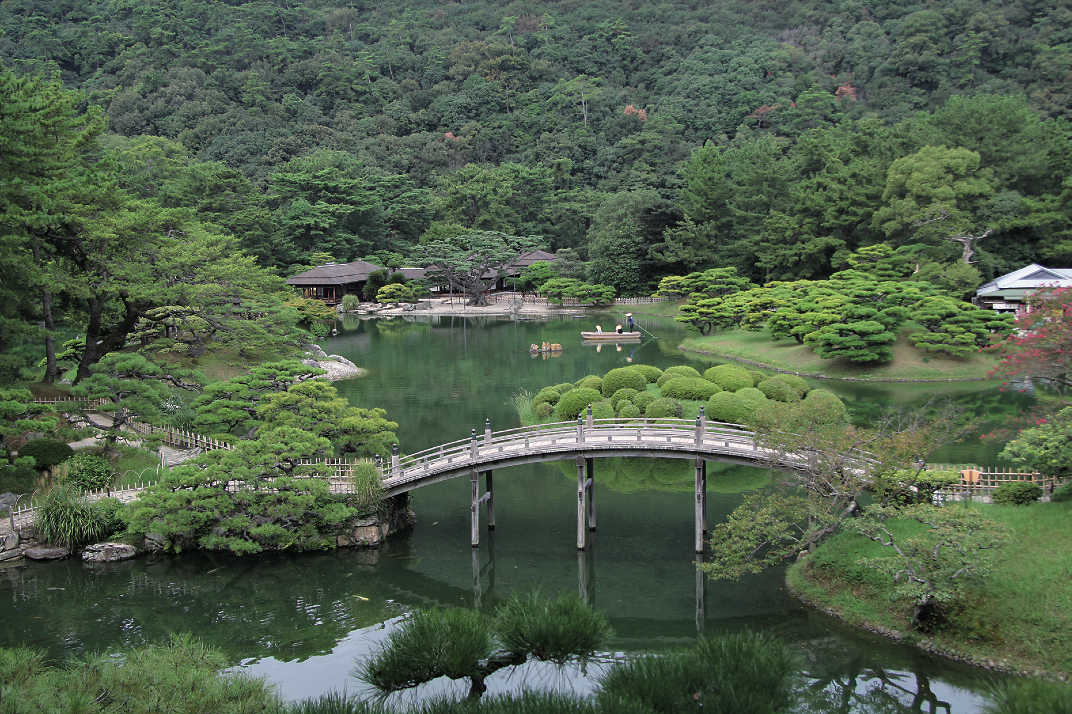
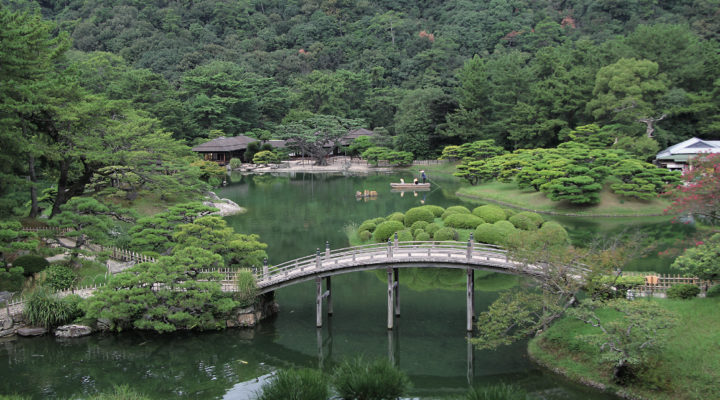
Although most famous for its pilgrimage of 88 temples, this island has many other hidden treasures.
According to the inhabitants of Takamatsu, a city in Kagawa Prefecture in Shikoku, Ritsurin Koen is the fourth most beautiful garden in Japan, just behind the gardens of Korakuen in Okayama, Kenrokuen in Kanazawa and Kairaku-en in Mito. You only need to visit any of these gardens to understand the Japanese’ enthusiasm for a beautiful landscape. Ritsurin is huge, stretching over 76 hectares, and has been landscaped to create a view of Mount Shiun, the mountain overlooking the garden. At the time of its creation in 1620, like any self-respecting prefectural lord’s garden (daimyo teien), it was used as a ground for horse riding (baba), and also included areas devoted to fishing and duck hunting (kamoba). The garden was designed by Ikoma Takatoshi who governed the plains of Sanuki (The old name for Kagawa Prefecture) at the time. It took a century to complete and then became the property of the Matsudaira Yorishige family between 1745 and 1820, finally being opened to the public in 1875 when Emperor Meiji came to power.
Nowadays it takes 30 full time gardeners working every day to look after the sixteen hills, six lakes and the various stone arrangements of all shapes and sizes that make up the landscape. Every step of the way reveals another spectacular view. You can board a ferry at Nanko or from the lakes to discover the gardens from a different angle. Various tea houses offer places to relax and contemplate the beauty in the traditional seated position, with the Kikugetsu-tei tea house by the lakeside having one of the best views of the garden.

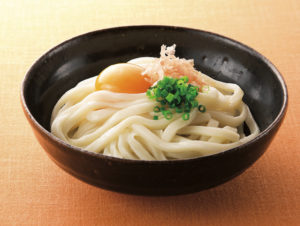
The Nakano udon school is located at the foot of Kompira-san, a Shinto shrine situated at the top of Mount Zozu. This pilgrimage has been popular since the Muromachi era (1336 to 1573), but it’s a difficult hike, as there are 785 steps up to the shrine and the incredible panorama over the pains from the top of Mount Zozu. On the way down you can stop at the Sonpira Oshiba kabuki theatre, built in 1835 and said to be the oldest theatre in Japan. The building alone is worth a visit, and it’s open all year around, although there are fewer performances in April.
The path through the Shikoku gardens will lead you further west, towards the city of Kochi, the main city of the prefecture whose name it bears and home to the Makino Botanical Garden. It was opened in 1958 and it boasts a collection of 3,000 species of plants, among which are many of those discovered by Professor Makino Tamitato himself. This legendary botanist dedicated his life to plants and his all-consuming passion for botany led him to classify over 400,000 species, of which he discovered 1,500 himself. He chose this location to establish a garden in the mountains with a full view of the moon at night. Unfortunately, Makino died the year before his garden was completed and opened to the public. There are medicinal plant gardens, innumerable flowers, picnic areas and a museum dedicated to the Professor’s work at the Makino Garden. There’s also a laboratory where species collected from all over the world are still studied and recorded to this day.
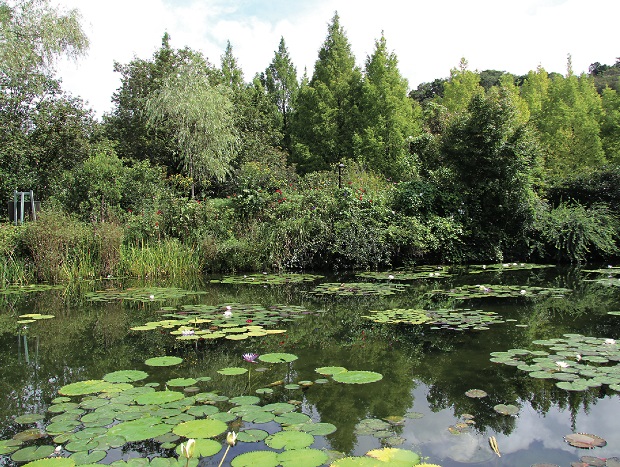
To relax after all this walking, we recommend that you visit the Hirome ichiba in Kochi, a huge indoor market where you can taste just about any regional specialty, whether raw oceanic bonito, whitebait with a yuzu beer, or even sweet potato fries. Don’t miss out on the city’s Sunday morning market, famous across Japan for its diversity. Fruit, vegetables, fish and all kinds of pickles are sold along a 3 kilometre stretch. You must brave the queue to be sure of tasting the famous imo-ten: sweet potato doughnuts that are to die for. Then you will want to queue again for the vegetable sushi.
Opening the doors of a temple or a restaurant can lead to the discovery of some incredibly beautiful gardens, as is the case at Chikurinji temple where you’ll find two. The Kao no niwa restaurant also has a garden worth visiting, and it’s famous for having been the home of the woman with whom the famous samurai and national hero Sakamoto Ryoma, himself a native of Kochi, was madly in love.
If you have some time left on your hands, travel a little further to Ehime Prefecture where the Tensha-en Garden, which dates back to the Edo era, has over 2,000 iris in bloom every May. We also recommend the Garyu-sansu Villa located in Ozu, where Mount Tomisuyama and the Hiji River come together in the building’s very traditional Japanese sukia-zukuri-style architecture, whose beauty inspired the style of many tea houses.
ADDRESSES
Nakano Udon
To book a class at the Nakano Udon gakko (lasting around 1h30)
Tel: 0877- 75-0001
www.nakanoya.net/school/kotohira.html
Kochi Hirome Ichiba
Open every day from 08.00 to 23.00. Opens at 07.00 on Sundays
www.hirome.co.jp
Kao No Niwa Restaurant
Lunch from 11.30 to 15.00, dinner from 17.30 to 21.00. Closed mondays and New Year’s Day
www.kaononiwa.jp
JOHANN FLEURI

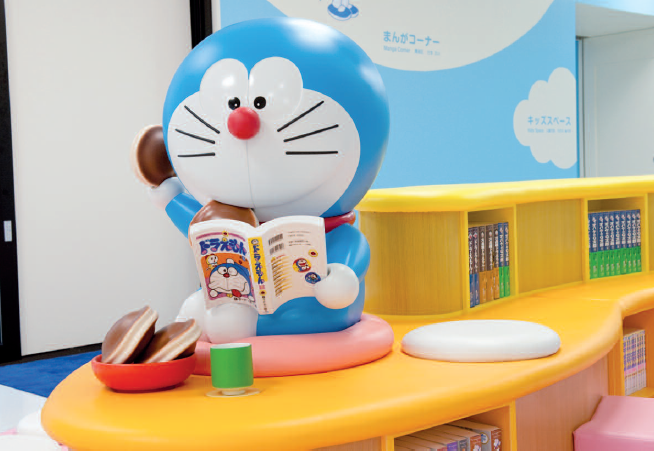
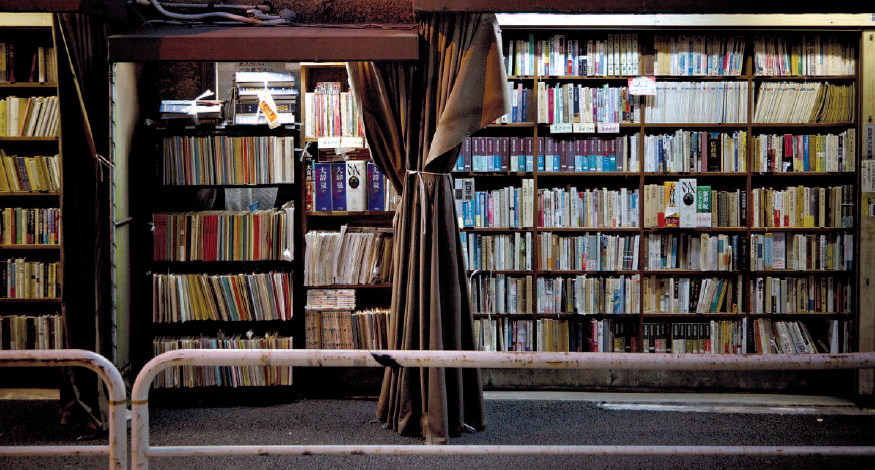
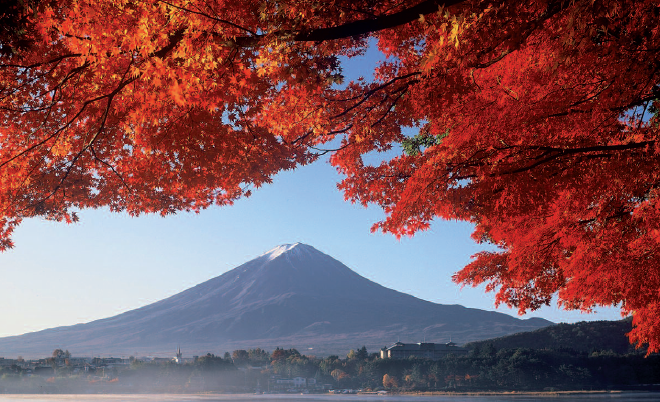
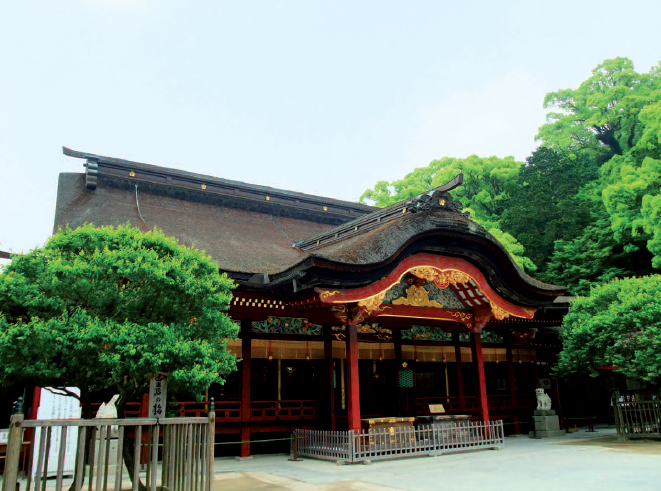
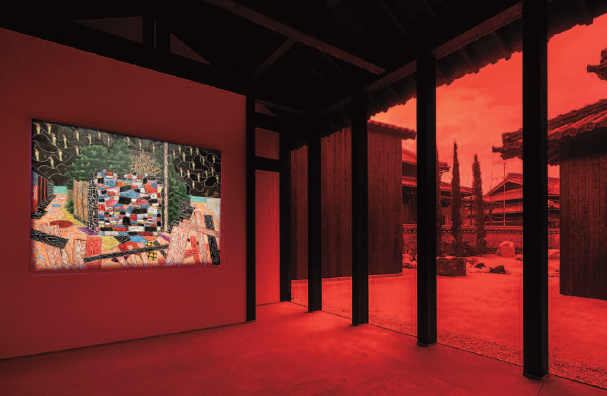
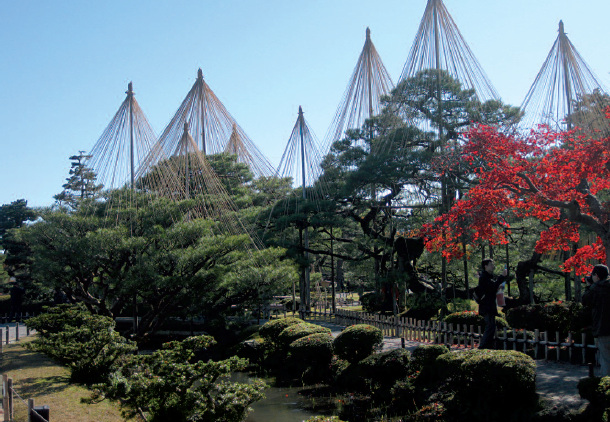
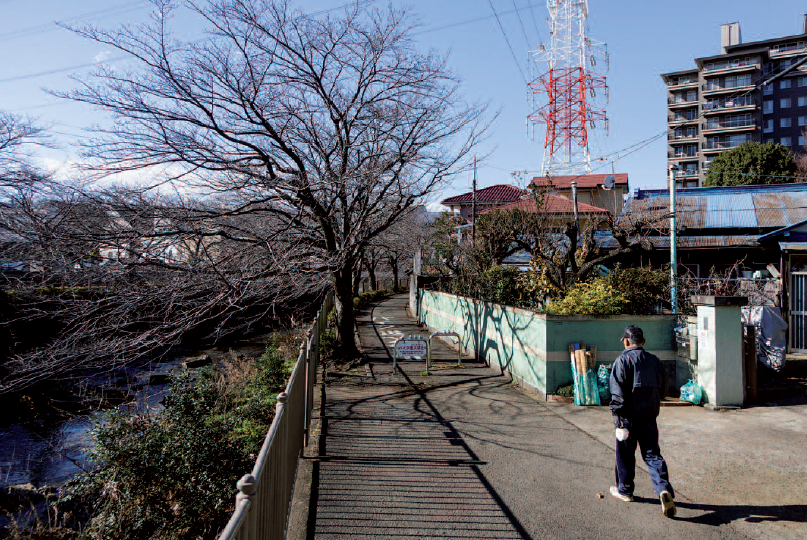
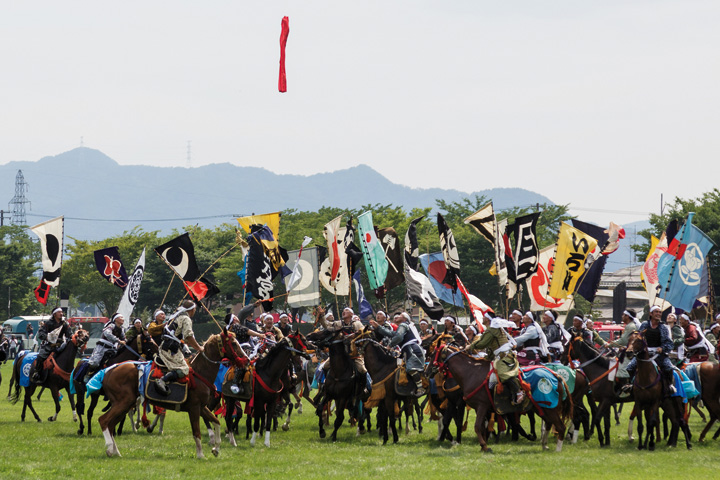
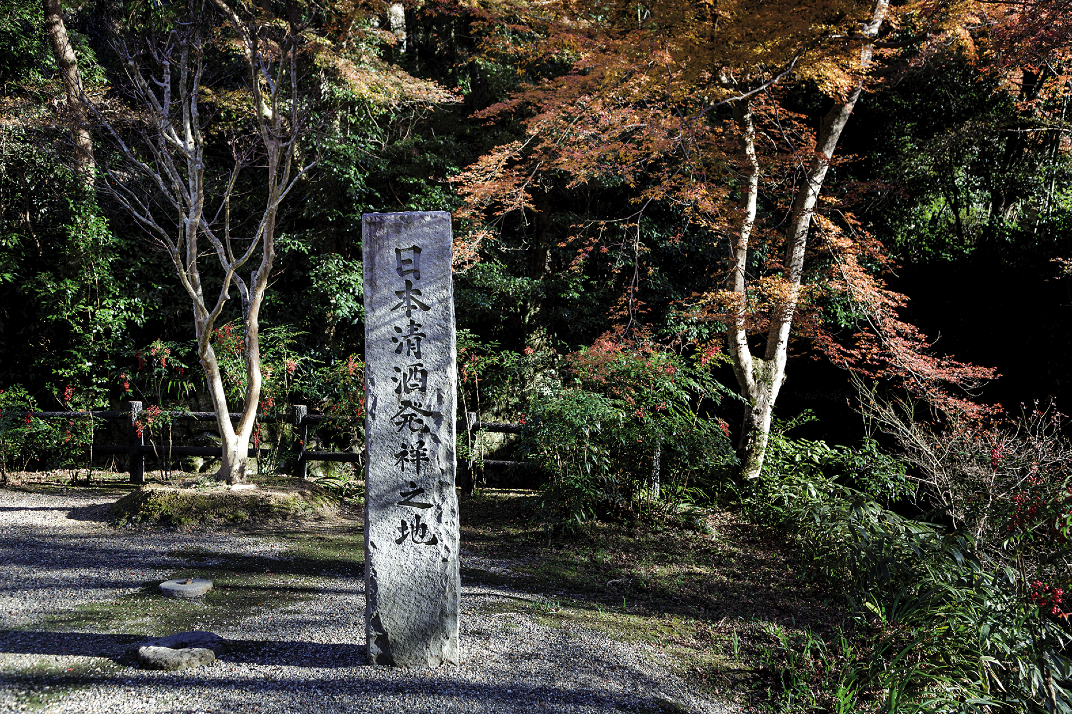
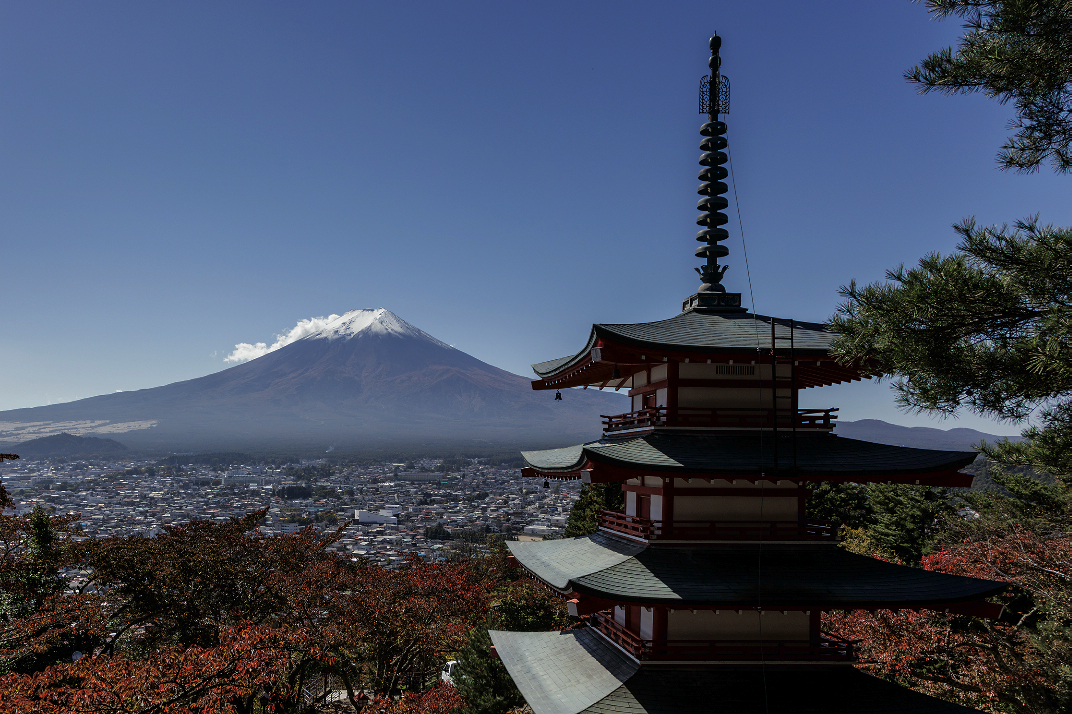
This just makes me want to visit Japan more and more!